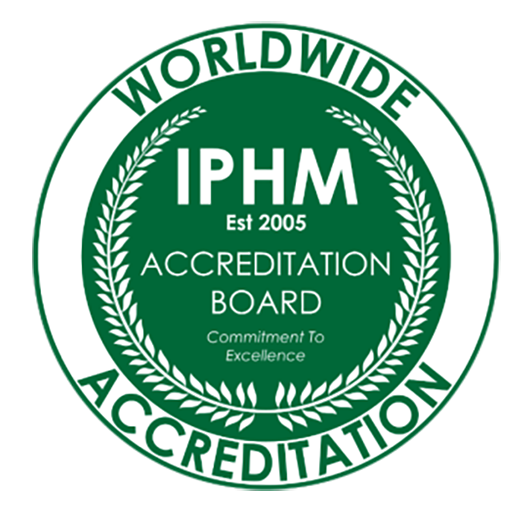Male hormones are essential for a healthy male reproductive system. Other important roles of male hormones include the regulation of mood, muscle mass, and energy.
Our Male Hormone Blood Test measures the levels of male hormones and adrenal hormones in your blood which regulate sex drive, mood, muscle mass and energy.
Male hormones are essential for a healthy male reproductive system. Other important roles of male hormones include the regulation of mood, muscle mass, and energy.
Our Male Hormone Blood Test includes a mix of hormones and proteins. Testosterone is the primary male sex hormone in men, which causes male characteristics. Another vital hormone, DHEA sulphate, is a precursor (an ingredient) that your body uses to produce testosterone. Other essential hormones include follicle-stimulating hormone (FSH) and luteinising hormone (LH). These hormones are produced by your brain’s pituitary gland and stimulate the testes to produce testosterone and sperm. The hormones called prolactin and oestradiol are often called female hormones, but they are also crucial for men’s health at lower levels.
Testosterone levels can naturally decrease with age, which can lead to increased abdominal fat (fat around your waist), loss of sex drive, mood changes, loss of muscle mass, lack of energy, and difficulty sleeping. If your testosterone levels are low, you may also experience a decrease in your exercise performance.
Please take your sample before 10am. Hormonal contraception can affect the results of this test. If you use hormone gels, pessaries, patches, or tablets, we strongly recommend a venous sample to minimise contamination. Hormones can be absorbed deep within the skin even after minimal contact and remain there for weeks despite vigorous handwashing. Do not take biotin supplements for two days before this test, discuss this with your doctor if it is prescribed.
DHEAS is the sulphated form of DHEA, a hormone which is produced by the adrenal glands and is responsible for male characteristics in both men and women. DHEAS gradually declines from the age of 30 onwards
Follicle Stimulating Hormone (FSH) is produced in the pituitary gland and is important for women in the production of eggs by the ovaries and for men for men in the production of sperm. In the first half of the menstrual cycle in women, FSH stimulates the enlargement of follicles within the ovaries. Each of these follicles will help to increase oestradiol levels. One follicle will become dominant and will be released by the ovary (ovulation), after which follicle stimulating hormone levels drop during the second half of the menstrual cycle. In men, FSH acts on the seminiferous tubules of the testicles where they stimulate immature sperm cells to develop into mature sperm.
Luteinising Hormone (LH) is produced by the pituitary gland and is important for male and female fertility. In women it governs the menstrual cycle, peaking before ovulation. In men it stimulates the production of testosterone.
Oestradiol is a female steroid hormone, produced in the ovaries of women and to a much lesser extent in the testes of men. It is the strongest of three oestrogens and is responsible for the female reproductive system as well as the growth of breast tissue and bone thickness. In pre-menopausal women, oestradiol levels vary throughout the monthly cycle, peaking at ovulation. In women, oestradiol levels decline with age, culminating with the menopause when the ovaries stop producing eggs. Low oestradiol can cause many symptoms associated with the menopause, including hot flushes, night sweats and mood swings. Low oestradiol can also cause osteoporosis.
Testosterone is a hormone that causes male characteristics. For men, it helps to regulate sex drive and has a role in controlling bone mass, fat distribution, muscle mass, strength and the production of red blood cells and sperm. Testosterone is produced in the testicles of men and, in much smaller amounts, in the ovaries of women. Testosterone levels in men naturally decline after the age of 30, although lower than normal levels can occur at any age and can cause low libido, erectile dysfunction, difficulty in gaining and maintaining muscle mass and lack of energy. Although women have much lower amounts of testosterone than men, it is important for much the same reasons, playing a role in libido, the distribution of muscle and fat and the formation of red blood cells. All laboratories will slightly differ in the reference ranges they apply because they are based on the population they are testing. The normal range is set so that 95% of men will fall into it. For greater consistency, we use the guidance from the British Society for Sexual Medicine (BSSM) which advises that low testosterone can be diagnosed when testosterone is consistently below the reference range, and that levels below 12 nmol/L could also be considered low, especially in men who also report symptoms of low testosterone or who have low levels of free testosterone.
Most testosterone circulating in the blood is bound to proteins, in particular SHBG and albumin; only 2-3 % of testosterone is free and available to cells. This test uses an algorithm to calculate the level of free or unbound testosterone in relation to total testosterone, SHBG and albumin.
The free androgen index (FAI) is a calculation used to determine the amount of testosterone which is free (unbound) in the bloodstream. Most testosterone is bound to proteins sex hormone binding globulin and albumin and is not available to interact with the body’s cells. The FAI is a calculation based on the ratio of testosterone and SHBG and is a measure of the amount of testosterone that is available to act on the body’s tissues. The free androgen index is used in women to assess the likelihood of polycystic ovarian syndrome. In men, free testosterone gives a better indication of testosterone status.
The Testosterone/Cortisol (T:C) ratio is a marker which shows promise in assessing whether athletes are recovering well after intense training. Testosterone is an anabolic hormone which helps to build muscle, produce red blood cells and increase aerobic metabolism in muscles. Cortisol is a catabolic hormone working antagonistically with testosterone, inhibiting protein synthesis and blocking anabolic signalling. The T:C ratio is more sensitive to the stresses of training than either measure alone. Over time it can be trended to see how well you are recovering.
Prolactin is a hormone which is produced in the pituitary gland and plays a role in reproductive health. Its primary purpose is to stimulate milk production after childbirth, and in pregnant and breastfeeding women prolactin levels can soar.
Albumin is a protein which is made mainly in the liver. It helps to exert the osmotic pressure which holds water within the blood. It also helps carry nutrients and medications and other substances through the blood and is important for tissue growth and healing. Albumin also carries hormones around the body, therefore measuring the amount of albumin in the blood can help us calculate how much hormone is available to your tissues.
SHBG (sex hormone binding globulin) is a protein which transports the sex hormones (testosterone, oestrogen and dihydrotestosterone (DHT)) in the blood. Hormones which are bound to SHBG are inactive which means that they are unavailable to your cells. Measuring the level of SHBG in your blood gives important information about your levels of free or unbound hormones which are biologically active and available for use.


Vita Health Clinic Ltd 2023. Company registered number: 15275009. Registered Address: 22a Park Road, Bingley, West Yorkshire, BD16 4JD
Financial Conduct Authority, registration number 978517. Credit is subject to status.
Get in touch by making inquiries on services or products you’d like to know more about or compare.